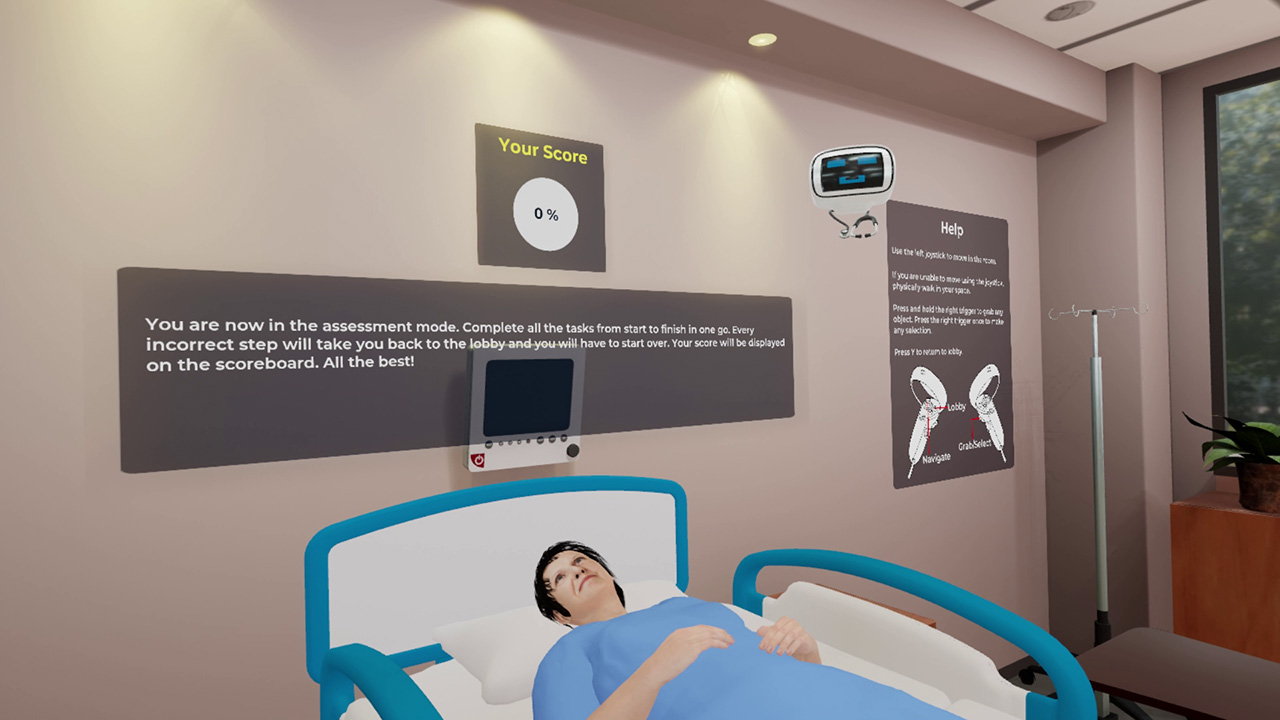Foley Catheter Insertion – Female
Urinary catheterization, a core nursing procedure, involves introducing a thin, long, flexible sterile tube into a patient’s bladder through the urethra in order to drain urine. The catheter is held in place with a small balloon inflated with sterile water. The balloon end of the catheter is placed in the bladder and the other end is connected to a urine bag suspended against the patient’s bed.
This VR simulation provides learners practice in the insertion of foley catheter in a female patient helping them perform it smoothly and confidently to avoid minor mistakes and complications.
- Explain urinary catheter insertion procedure to a virtual patient
- Demonstrate positioning and prepping of patient for urinary catheter insertion
- Demonstrate setting up of sterile field for urinary catheter insertion
- Demonstrate successful insertion of urinary catheter in a female patient
- Demonstrate confirming placement of urinary catheter in a female patient
- Demonstrate correct inflation of urinary catheter balloon
- Demonstrate applying securement device and placement of urinary catheter drainage bag
- Explain aftercare instructions to virtual patient
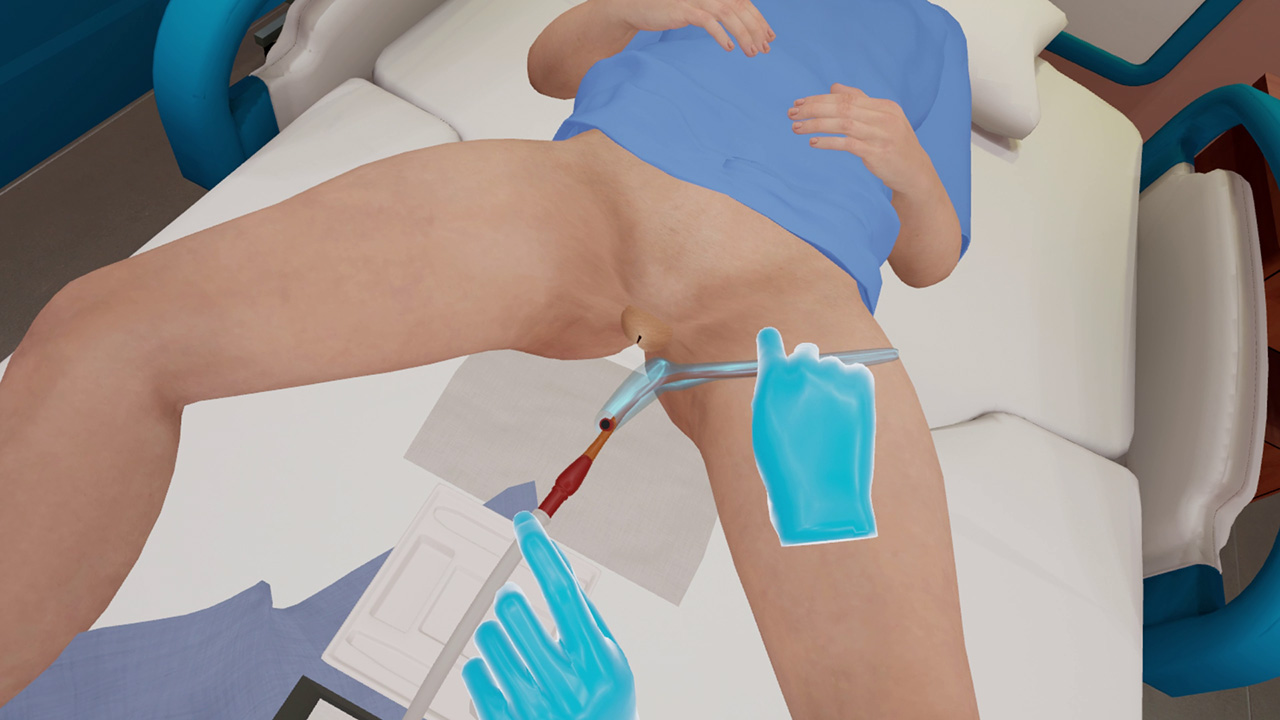
Developed in alignment with Agency for Healthcare Research and Quality (AHRQ) Appendix G. Indwelling Urinary Catheter Insertion Checklist.
Customize Your Program
Get rid of the editor. Adopt in-VR customization.
MedVR Education is bringing to you in-VR customization that will enable you to customize your procedural simulations by making selections from a range of feature choices.
- Select patient from a diverse background
- Choose preferred virtual environment
- Select equipment used in the procedure
- Modify difficulty level of the assessment mode
- …..many more to come
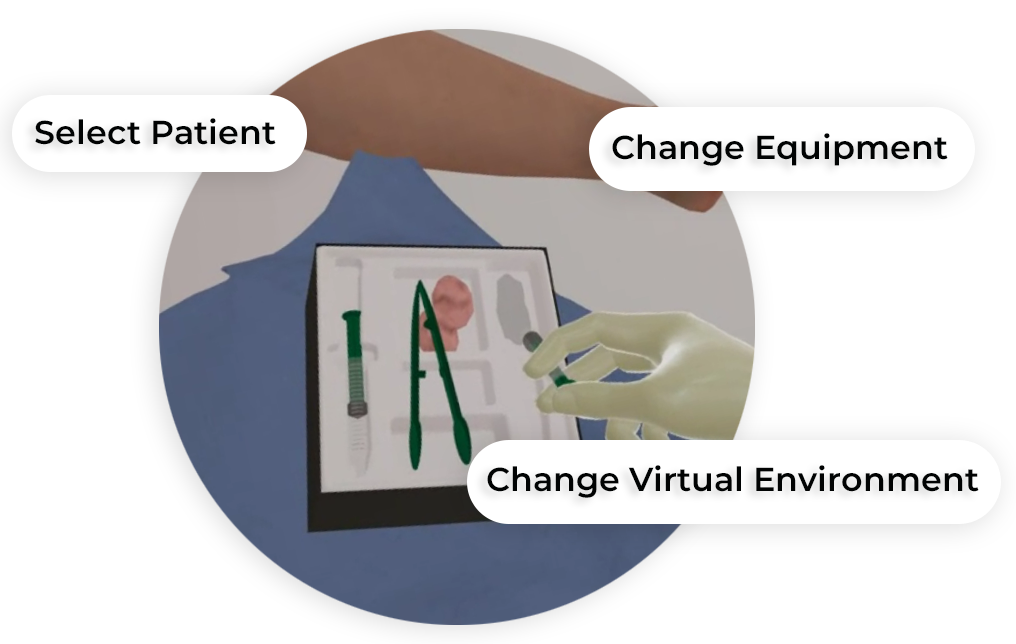
 Physics-based Interaction
Physics-based Interaction
Core Skills Training
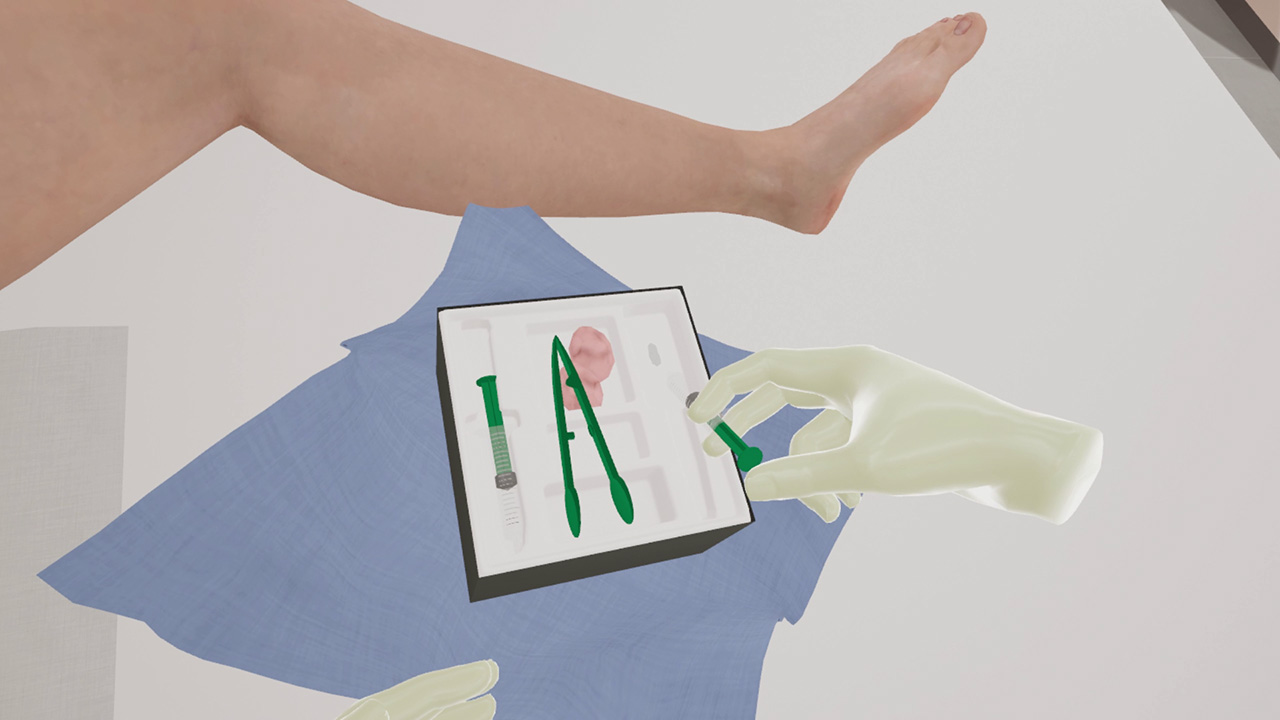
Patient Preparation
Thorough preparation sets the procedure on the right track. This module on patient preparation includes confirming the identity of the patient, preparing the patient, gathering the necessary equipment and creating a sterile field. The session is equipped with a responding virtual patient, physics-based interactions, and adequate affordances representing the equipment required for the procedure; all set in a photorealistic virtual environment for a close-to-reality experience.
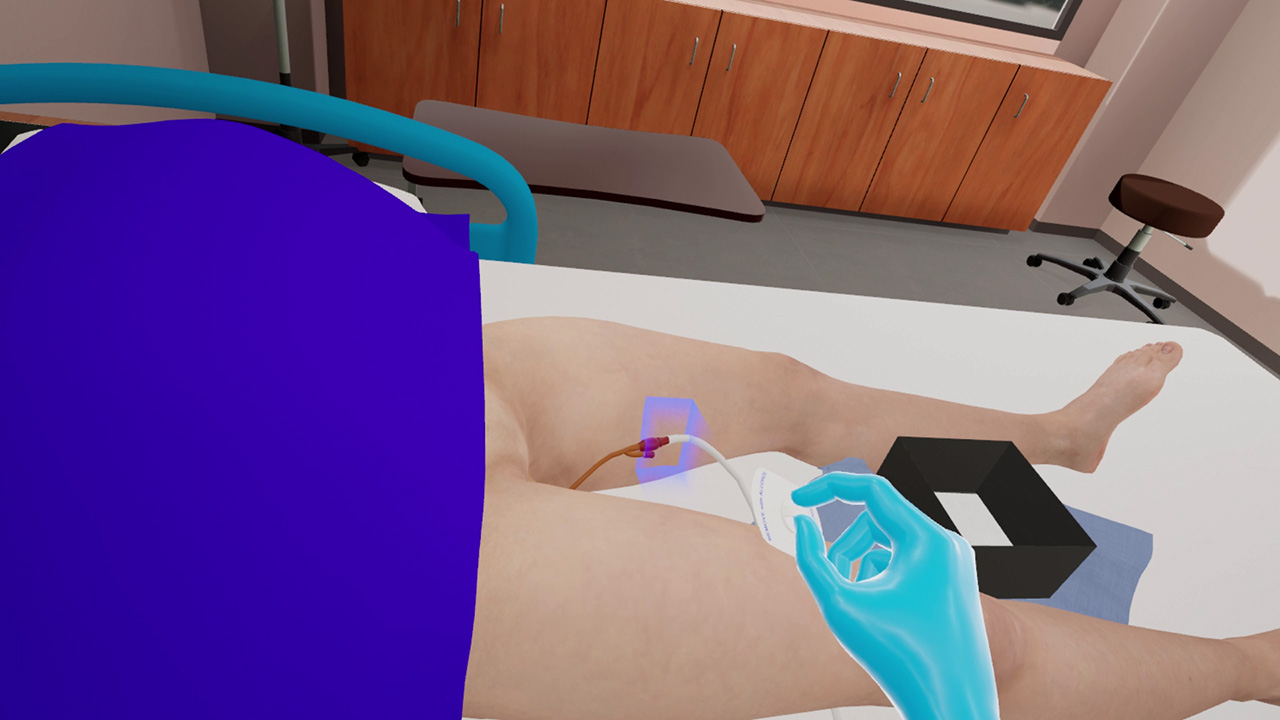
Catheter Insertion
Catheter insertion is a delicate and gentle procedure and requires a skilled set of hands to perform. This module in catheter insertion is designed to provide learners this very skill of inserting the catheter, ensuring its correct placement and inflating the balloon to secure it in the bladder. Learners get to practice the procedure with a virtual patient in a zero-risk environment enriched with haptic feedback and physics-based interactions. All necessary affordances are made available to ensure a thorough practice session.
Training
With prompts, guidance and affordances learners are hand-held through the process to practice the procedure in a virtual environment with a virtual patient.
- Photorealistic Virtual Environment
- Physics-based Interactions
- Learn by Doing
- Visual Affordances
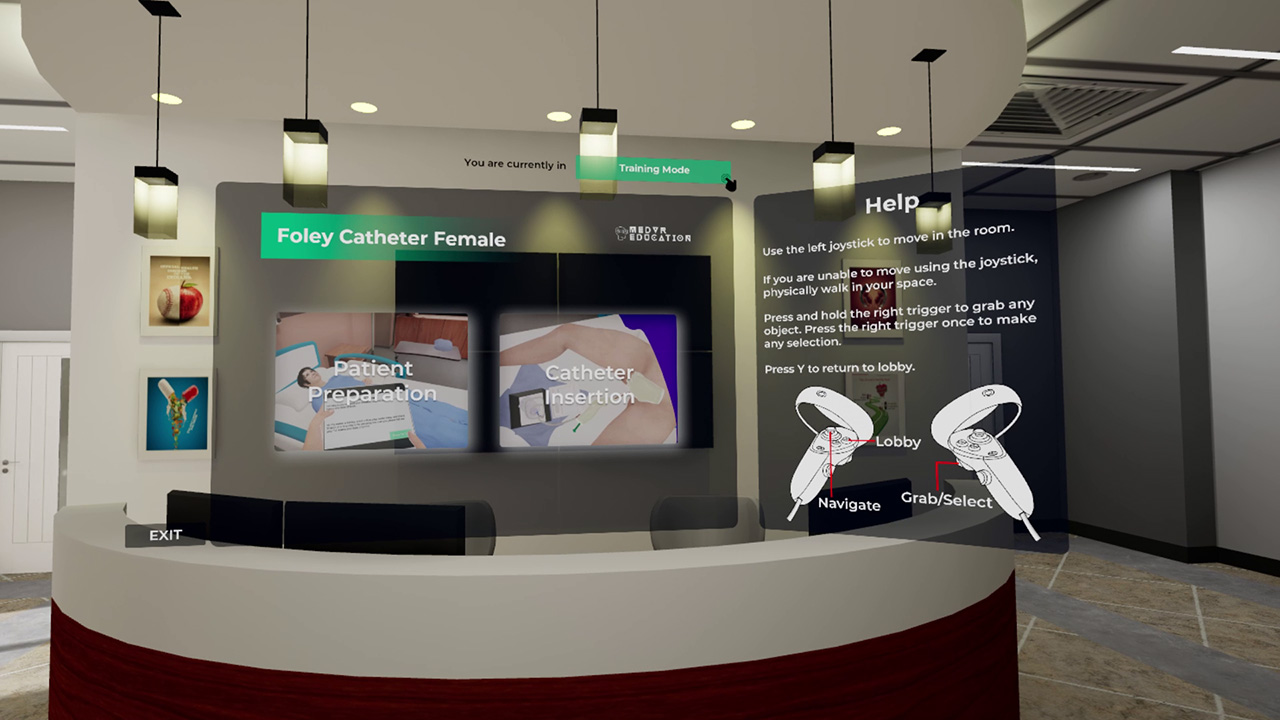
Assessment
Test skills to perform the procedures from start to finish without prompts. An incorrect step will take the learner back to the start to start afresh.
- Live Scoring
- Instant Feedback
- Unlimited Practice Sessions
- LMS Integration
